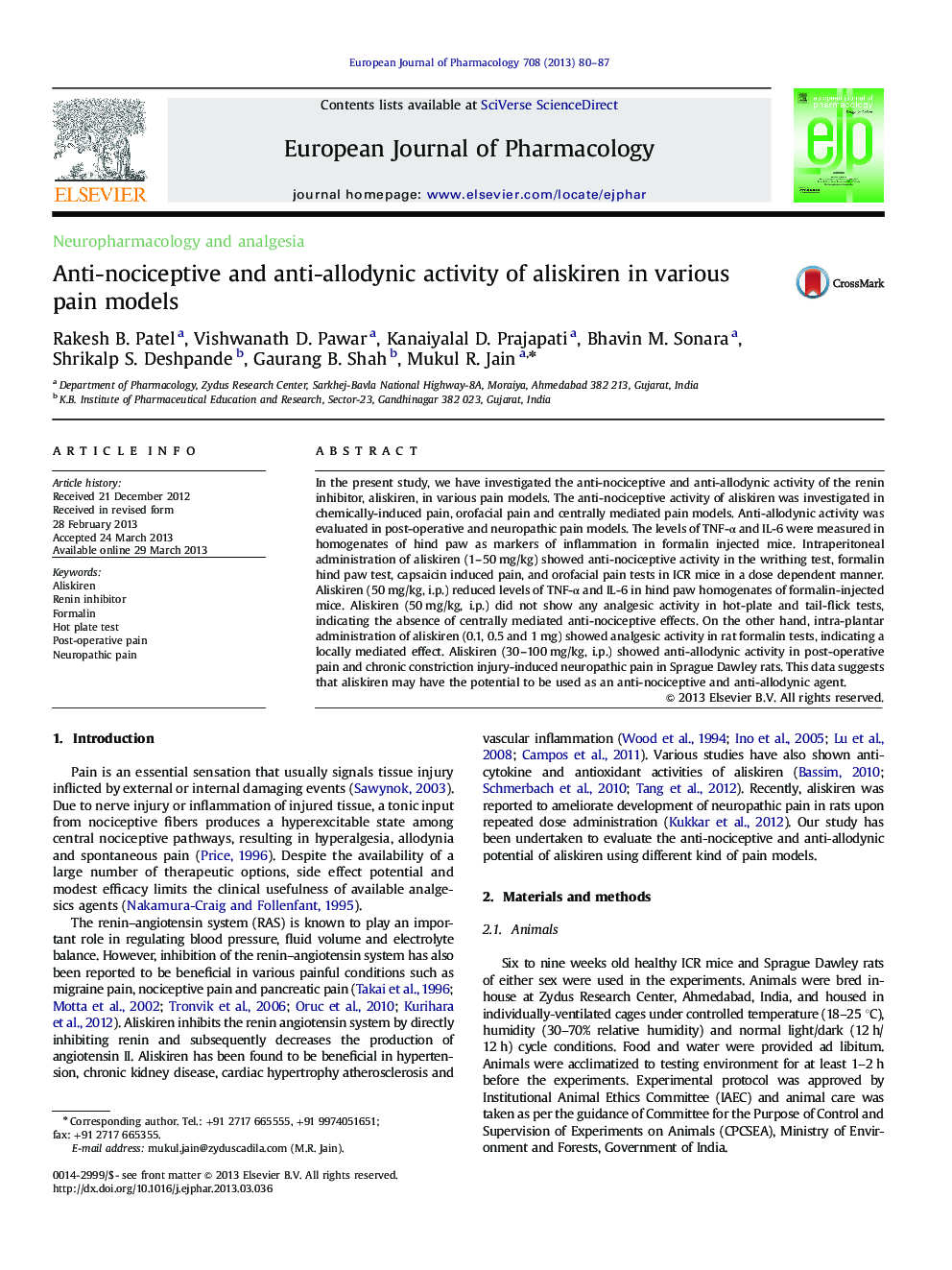| Article ID | Journal | Published Year | Pages | File Type |
|---|---|---|---|---|
| 5828644 | European Journal of Pharmacology | 2013 | 8 Pages |
In the present study, we have investigated the anti-nociceptive and anti-allodynic activity of the renin inhibitor, aliskiren, in various pain models. The anti-nociceptive activity of aliskiren was investigated in chemically-induced pain, orofacial pain and centrally mediated pain models. Anti-allodynic activity was evaluated in post-operative and neuropathic pain models. The levels of TNF-α and IL-6 were measured in homogenates of hind paw as markers of inflammation in formalin injected mice. Intraperitoneal administration of aliskiren (1-50 mg/kg) showed anti-nociceptive activity in the writhing test, formalin hind paw test, capsaicin induced pain, and orofacial pain tests in ICR mice in a dose dependent manner. Aliskiren (50 mg/kg, i.p.) reduced levels of TNF-α and IL-6 in hind paw homogenates of formalin-injected mice. Aliskiren (50 mg/kg, i.p.) did not show any analgesic activity in hot-plate and tail-flick tests, indicating the absence of centrally mediated anti-nociceptive effects. On the other hand, intra-plantar administration of aliskiren (0.1, 0.5 and 1 mg) showed analgesic activity in rat formalin tests, indicating a locally mediated effect. Aliskiren (30-100 mg/kg, i.p.) showed anti-allodynic activity in post-operative pain and chronic constriction injury-induced neuropathic pain in Sprague Dawley rats. This data suggests that aliskiren may have the potential to be used as an anti-nociceptive and anti-allodynic agent.
